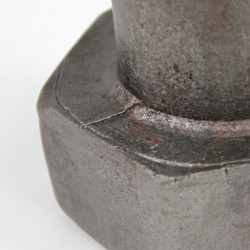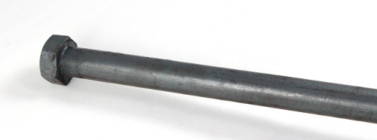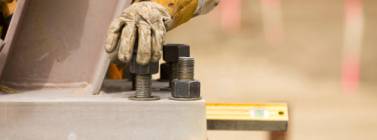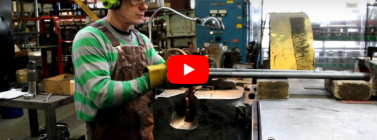Are die seams allowed on headed bolts?

There are several differences between bolts intended for use in construction and more precision fasteners, such those used in an OEM application. One difference for headed bolts is the process in which the head is formed on the bolt and the resulting appearance of the bolts.
Larger, construction headed bolts are typically made by hot-forging the head of the bolt in an upsetter. When bolts are hot-forged, the steel is held between two gripper blocks which clamp the steel just under where the head is being formed, leaving die seam marks under the head of the bolt. Because the bolt heads are formed at a high temperature, there will also be a small amount of swelling under the head.
Per ANSI B18.2.1. hex bolts, heavy hex bolts, and square head bolts, “..may have a reasonable swell or fin under the head or die seam on the body not to exceed the basic bolt diameter by the following:
- 0.030 in. for sizes up to 1/2″
- 0.050 in. for sizes 5/8 and 3/4″
- 0.060 in. for sizes over 3/4″ to 1-1/4”
- 0.090 in. for sizes over 1-1/4” to 2”
- 0.120 in. for sizes over 2” to 3”
- 0.190 in. for sizes over 3”
Cap screws, which are generally more of a precision fastener, have no such allowances. Cap screws are typically manufactured through a different process, called cold heading. For hot-forged construction bolts however, die seams are perfectly allowable per the standards stated above.





Thank you for your easy to understand, descriptions showing how bolts are manufactured. I am 83 years old, and I am unlikely to take up any position in your industry. I am just naturally curious how things are made. Your text and illustrations were a great help to me. Well done. Daniel.